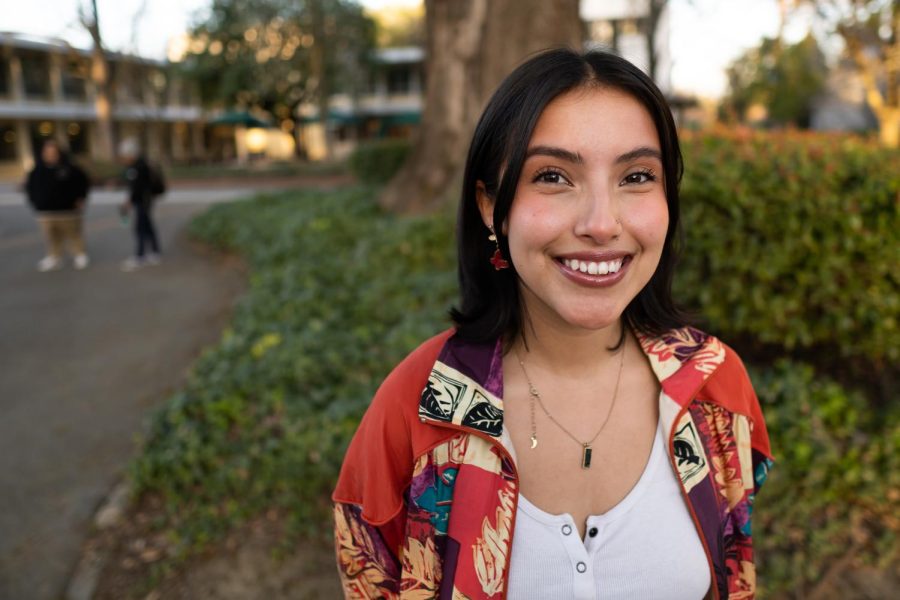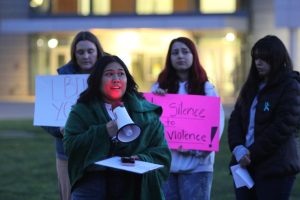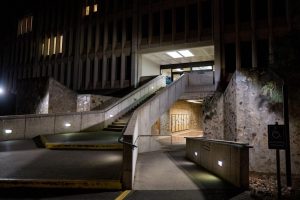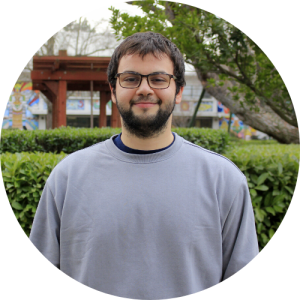Sac State support plan seeks to spread sexual assault prevention awareness
Students demand more dedication to campus safety
Fourth-year ethnic studies major Jenny Ruiz-Sanchez near Riverfront Feb. 20, 2023. With the release of Sacramento State’s Sexual, Violence, Safety, and Support plan, Ruiz-Sanchez said she feels the plan is a step in the right direction but said the university needs to share this information with more students.
February 28, 2023
Sacramento State officials said the university is trying to spread awareness of sexual assault and prevention through their Sexual Violence, Prevention, Safety, and Support Plan, which also aims to improve campus safety.
This plan was created after several sexual assaults occurred on and off campus last semester. Among other initiatives, a portion of this plan seeks to create a series of videos about sexual assault, a Canvas course on sexual assault prevention, hold in-person workshops on the signs and consequences of sexual assault and an optional personal safety training course.
So far, only the optional training courses have been completed. As of now, no student has participated in these courses, Sac State Deputy Chief Christina Lofthouse said.
Lofthouse added that campus police have created this course for students, which discusses topics like safety at night.
“The police department has made strides to make sure this is a safe campus,” Lofthouse said. “We have police officers here at all times, we have community service officers here seven days a week for security patrol and escorts and we have an upcoming active shooter training in March. We’re always looking to see what we can do better to increase safety for everyone on campus.”
Some students, however, would disagree with Sac State becoming a safer campus.
First-year communications student Kai Levato said he doesn’t feel safe on campus because he notices a lack of security. Levato said he wants to see upgraded lighting, more security cameras and a larger support staff.
He described how he feels both mentally and physically unsafe on campus, explaining how he doesn’t feel the university is doing much about sexual assault and how the university’s therapy programs are lacking.
“I emailed trying to get counseling my first week here and it took about a week to get a response for an appointment and another month to actually see a therapist,” Levato said.
Levato said he is not alone in feeling unsafe on campus, adding that he doesn’t believe a single freshman on campus feels comfortable. He described how he had to escort his best friend to and from her night class due to her not feeling comfortable.
“She keeps pepper spray and a taser on her, this is a real fear,” Levato said. “Almost every girl in my class has some sort of self-defense measure. In one class I even saw students showing each other what self-defense weapons they carry on them.”
Ed Mills, vice president of student affairs, said it’s important to create a safe physical environment with a large campus such as Sac State, which includes increased lighting and using Campus Safety Officer escort services.
Mills said the first goal of the plan aims to decrease sexual assault by making sure students have a thorough understanding of what constitutes sexual assault.
“A concept like informed consent is not something a lot of students are very familiar with when they come to the university,” Mills said. “So making sure they understand what it is and what the law is around it.”
When looking at the several sexual assault incidents reported to police that occurred on and around campus from last semester, all of the alleged perpetrators were not students.
Mills explained how this plan’s objective is to make students aware that their actions could harm others and focus on how bystanders can intervene when witnessing harm done to another.
Jenny Ruiz-Sanchez, a fourth-year ethnic studies student and intern with Students for Quality Education, said she feels safe on campus during the day when many students are around. However, she said she is cautious at night due to how dark the campus gets.
“I don’t feel threatened by any student on campus,” Ruiz-Sanchez said.
Regarding a police presence on campus, Ruiz-Sanchez said the general militarization of police makes her feel unsafe around law enforcement.
“I don’t rely on our police by any means and they don’t make me feel safer,” she said. “I think the police are more of a threat to me than any student on campus.”
However, Ruiz-Sanchez said she is confident in the plan, highlighting the video series as a step in the right direction, but said the university needs to share this information with more students.
“I haven’t heard a lot of students talk about it,” Ruiz-Sanchez said. “I hope there is more talk about it.”



































































































































